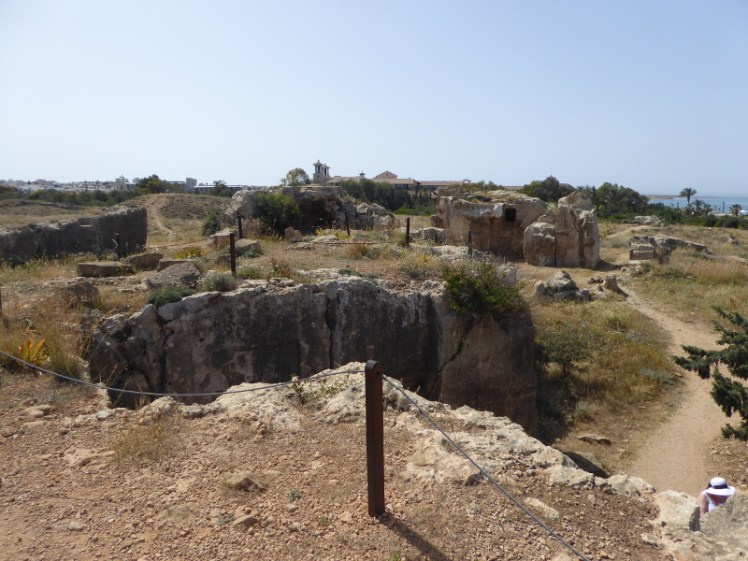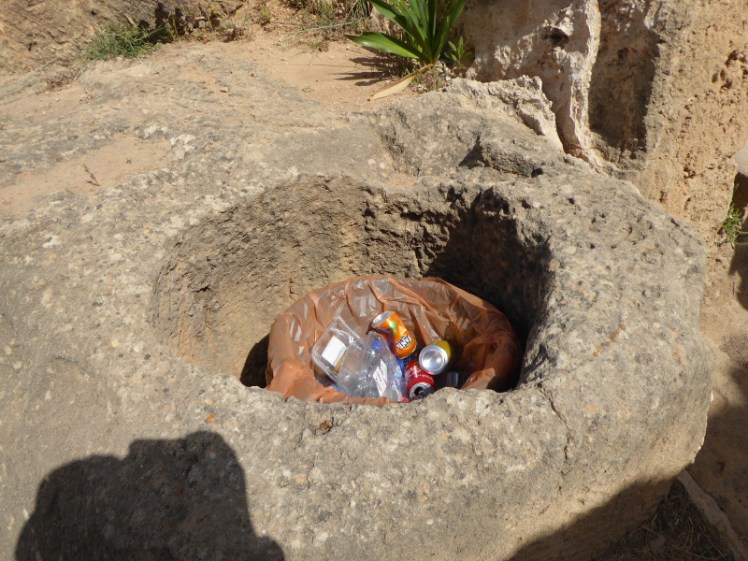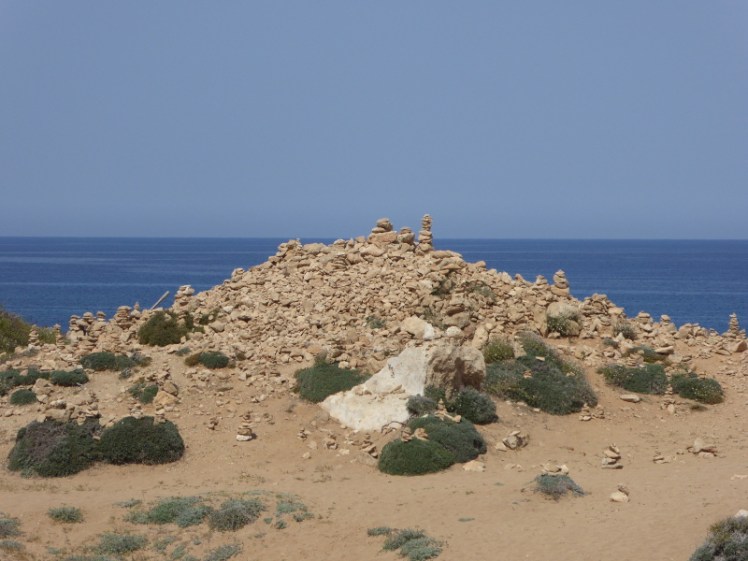Post 1 in an ongoing series on my week-long trip to Cyprus!
In short: I went on my first real family holiday since 2011 and my first real sun-hunting holiday ever. We stayed in a huge but echoey villa near Coral Bay with our own pool and I have a list of about ten posts to write over the next couple of months. If you’ve been following me on Instagram (which you should!) you may have seen the villa or indeed several pictures of me frolicking in the pool with an inflatable unicorn, like the hipster Instagram trash I am.

So I’m going to start with the Tombs of the Kings. We flew into Pafos Airport and drove forty-ish minutes north to Coral Bay, part of which was along Tombs of the Kings Road. Before we even reached the villa, we realised that this was the premier tourist attraction in the Pafos area and so after spending the first day getting our bearings in and around Coral Bay, the Tombs of the Kings was our first real stop.

They’re certainly tombs. Can’t argue with that. But they were built (dug? established?) long after the Kings of Cyprus were abolished and in all likelihood, they were merely home to important civil servants, soldiers and local VIPs. They get the name from their magnificence and their resemblance to actual royal resting places. These range from the third century BC to the fourth century AD – very broadly speaking, they’re Roman. Less broadly, they’re Hellenistic and Ptolemaic.


You should follow the main path from the entrance. We got as far as what turns out to be Tomb 2, which is actually off the main path, and then accidentally took a desire path out onto the peninsula. No tombs there, just interesting rocks and a huge heap of tourist-built cairns that turns my stomach.

I did like the big pit – I guess it’s technically and literally a necropolis; it feels very much like a big city crammed full of the dead. In fact, I declared that when I die, this is where I want to be placed, although it’s all dug up, it’s empty, it’s full of wild flowers and it has tourists wandering through it all the time. If I was a VIP in ancient Paphos, this is where I’d have wanted to end up.

And then we found the real tombs. In fact, we accidentally wandered into Tomb 3.
My mum and my sister had, by this point, done enough walking in the heat that they weren’t interested. My mum was also petrified of the dromos, the stairs or ramps down which the body was taken. It also appears to be the modern Greek word for a road or street, judging by the “road closed” sign I attempted to interpret. Anyway, these tombs and thus the stairs, are somewhere in the vicinity of two thousand years old. If you’ve got much control over your feet, they’re fine. I was quite capable of going up and down them. My mum refused to even try and I think she sat in the shade in a panic in case either I, or my dad in particular, fell down them. Spoiler: we didn’t. We didn’t see anyone fall down or trip or stumble.

And you know what we found at the bottom? First a square room with various slots in all sides where bodies once lay. And then a hole and a boulder which would allow us to scramble into the next room – where Doric columns clustered around a sunlit courtyard. And that wasn’t even all. Tomb 3 just kept giving.



Tomb 8 was also good. It had somehow lost its roof and is now open to the sun. You can climb up on what is now the roof. Mum and Sister still refused to come down.



If I was to come back to Cyprus regularly – which I won’t, but I’ll go into that in a later blog – this feels like the sort of place I would visit regularly. I think it would take at least half a dozen visits before I began to get bored with exploring subterranean tombs and imagining myself a Roman living here. It holds some of the same magic in my mind that Þingvellir in Iceland does (no physical similarities, though). And it’s only €2.50 a visit. Take food and water, this one has neither cafe nor vending machines.
One thought on “In the Tombs of the Kings”